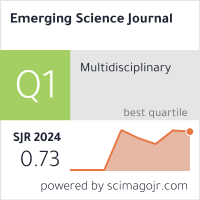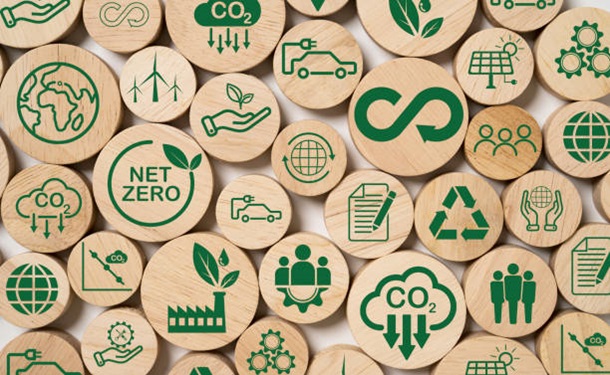Effective Model of Knowledge-Based Transformation and Sustainable Development in BRICS-T Countries
Downloads
This article presents a novel empirical framework for evaluating knowledge-based transformation and sustainable development in BRICS-T countries. The framework is based on an integrated Triple Helix assessment model that quantifies the interrelationships between research output, educational innovation, industry engagement, market alignment and policy support. Using a comprehensive dataset from 60 universities across BRICS-T countries, combined with an AHP-based weighting system derived from 24 cross-sector experts, this study reveals previously unidentified patterns in innovation and educational outcomes. Our method demonstrates that only research output (β = 0.375, p < 0.001) and industry engagement (β = 0.418, p < 0.001) consistently predict innovation output across all BRICS-T countries, while market alignment influences educational quality in only four out of the six nations. The analytical framework successfully quantifies significant performance variations across countries, with innovation output scores ranging from 2.89 to 4.23 and educational quality scores ranging from 3.08 to 4.15. The findings contribute to Triple Helix theory through country-specific decomposition of relationships, supplementing existing knowledge-based economy theories with quantitative evidence of differential effectiveness across emerging economies. This methodology can be implemented for strategic planning in higher education systems transitioning from resource-based to knowledge-based economies.
Downloads
[1] Bera, S., & Rahut, D. B. (2024). Driving Global Innovation Convergence: Evidence of 104 Countries’ Productivity and Efficiencies of National Innovation System. Journal of the Knowledge Economy, 15, 18467–18494. doi:10.1007/s13132-023-01728-5.
[2] Nurunnabi, M., Esquer, J., Munguia, N., Zepeda, D., Perez, R., & Velazquez, L. (2020). Reaching the sustainable development goals 2030: energy efficiency as an approach to corporate social responsibility (CSR). GeoJournal, 85(2), 363–374. doi:10.1007/s10708-018-09965-x.
[3] Badeeb, R. A., Szulczyk, K. R., Zahra, S., & Mukherjee, T. C. (2023). Innovation dynamics in the natural resource curse hypothesis: A new perspective from BRICS countries. Resources Policy, 81, 103337. doi:10.1016/j.resourpol.2023.103337.
[4] Diaconescu, M., Marinas, L. E., Marinoiu, A. M., Popescu, M. F., & Diaconescu, M. (2024). Towards Renewable Energy Transition: Insights from Bibliometric Analysis on Scholar Discourse to Policy Actions. Energies, 17(18), 4719. doi:10.3390/en17184719.
[5] Li, J., Shi, Y., & Song, X. (2024). The dynamics of digitalization and natural resources in shaping the sustainable development agenda in BRICS-T nations. Resources Policy, 91, 104866. doi:10.1016/j.resourpol.2024.104866.
[6] Jordão, R. V. D. (2022). Editorial: Information, knowledge, and technology in developing economies in times of crises. Bottom Line, 35(2–3), 25–32. doi:10.1108/BL-09-2022-134.
[7] Wang, C., Qiao, C., Ahmed, R. I., & Kirikkaleli, D. (2021). Institutional Quality, Bank Finance and Technological Innovation: A way forward for Fourth Industrial Revolution in BRICS Economies. Technological Forecasting and Social Change, 163, 120427. doi:10.1016/j.techfore.2020.120427.
[8] UNSD (2006). United Nations Statistics Division. United Nations, New York, United States. Available online: https://unstats.un.org/UNSDWebsite/ (accessed on May 2025).
[9] Khomyakov, M., Dwyer, T., & Weller, W. (2020). Internationalization of higher education: Excellence or network building? What do BRICS countries need most? Sociologias, 22(54), 120–143. doi:10.1590/15174522-99066.
[10] Ji, M., Jiao, Y., & Cheng, N. (2023). An Innovative decision-making scheme for the high-quality economy development driven by higher education. Journal of Innovation and Knowledge, 8(2), 100345. doi:10.1016/j.jik.2023.100345.
[11] Fomba, B. K., Talla, D. N. D. F., & Ningaye, P. (2023). Institutional Quality and Education Quality in Developing Countries: Effects and Transmission Channels. Journal of the Knowledge Economy, 14(1), 86–115. doi:10.1007/s13132-021-00869-9.
[12] Thomas, E., Faccin, K., & Asheim, B. T. (2021). Universities as orchestrators of the development of regional innovation ecosystems in emerging economies. Growth and Change, 52(2), 770–789. doi:10.1111/grow.12442.
[13] Vasiljeva, М. V., Osipov, G. V., Ponkratov, V. V., Ivlev, V. J., Ivleva, M. I., Karepova, S. G., Gardanova, Z. R., & Dudnik, O. V. (2021). Factors to improve publication productivity in Russian universities. Publications, 9(2), 21. doi:10.3390/publications9020021.
[14] Hamdan, W., & Alsuqaih, H. (2024). Research Output, Key Topics, and Trends in Productivity, Visibility, and Collaboration in Social Sciences Research on COVID-19: A Scientometric Analysis and Visualization. SAGE Open, 14(4), 21582440241286217. doi:10.1177/21582440241286217.
[15] Al-Jamimi, H. A., BinMakhashen, G. M., & Bornmann, L. (2022). Use of bibliometrics for research evaluation in emerging markets economies: a review and discussion of bibliometric indicators. Scientometrics, 127(10), 5879–5930. doi:10.1007/s11192-022-04490-8.
[16] Dang, Q. T., Rammal, H. G., & Nguyen, T. Q. (2024). University-industry knowledge collaborations in emerging countries: the outcomes and effectiveness in Vietnam. Knowledge Management Research and Practice, 1–20, 600–619. doi:10.1080/14778238.2024.2355924.
[17] Baleeiro Passos, J., Valle Enrique, D., Costa Dutra, C., & Schwengber ten Caten, C. (2023). University industry collaboration process: a systematic review of literature. International Journal of Innovation Science, 15(3), 479–506. doi:10.1108/IJIS-11-2021-0216.
[18] Ordóñez-Matamoros, G., Centeno, J. P., Andrade-Sastoque, E., & Pinzón-Camargo, M. A. (2021). Transformative Innovation Policy in Emerging Economies: What Does It Entail? Palgrave Studies in Democracy, Innovation and Entrepreneurship for Growth, 105–146. doi:10.1007/978-3-030-80832-7_6.
[19] Schot, J., & Steinmueller, W. E. (2018). Three frames for innovation policy: R&D, systems of innovation and transformative change. Research Policy, 47(9), 1554–1567. doi:10.1016/j.respol.2018.08.011.
[20] Rababah, A., Nikitina, N. I., Grebennikova, V. M., Gardanova, Z. R., Zekiy, A. O., Ponkratov, V. V., Bashkirova, N. N., Kuznetsov, N. V., Volkova, T. I., Vasiljeva, M. V., Ivleva, M. I., & Elyakova, I. D. (2021). University social responsibility during the covid-19 pandemic: Universities’ case in the brics countries. Sustainability (Switzerland), 13(13), 7035. doi:10.3390/su13137035.
[21] Pradhan, R. P., Arvin, M. B., Nair, M. S., Bennett, S. E., & Brem, A. (2024). Do Innovation and Institutional Quality Elevate Economic Growth? Empirical Evidence from Developing Countries. International Journal of Innovation and Technology Management, 21(2), 2450011. doi:10.1142/S0219877024500111.
[22] Semenova, G. N., Krupnov, Y. A., Kostyukova, E. I., & Satsuk, T. P. (2023). The infrastructural role of education in the social and investment model of economic growth: the specifics of emerging markets. Frontiers in Education, 8. doi:10.3389/feduc.2023.1154147.
[23] Andonovikj, V., Mileva Boshkoska, B., Redek, T., & Boškoski, P. (2024). A data-driven approach to aligning academic offerings with industry needs for business and economy in Slovenia. Journal of Decision Systems, 33, 284–296. doi:10.1080/12460125.2024.2354587.
[24] Belli, L., & Galdino de Magalhães Santos, L. (2024). Editorial: Toward a BRICS stack? Leveraging digital transformation to construct digital sovereignty in the BRICS countries. Computer Law and Security Review, 106064. doi:10.1016/j.clsr.2024.106064.
[25] Ma, D., & Zhu, Q. (2022). Innovation in emerging economies: Research on the digital economy driving high-quality green development. Journal of Business Research, 145, 801–813. doi:10.1016/j.jbusres.2022.03.041.
[26] Temel, S., Dabić, M., Murat Ar, I., Howells, J., Ali Mert, & Yesilay, R. B. (2021). Exploring the relationship between university innovation intermediaries and patenting performance. Technology in Society, 66, 101665. doi:10.1016/j.techsoc.2021.101665.
[27] Terra, B., Lehnemann, L., Resende, D. N., Almeida, J., & Gouvea, R. (2023). Brics & Entrepreneurial Universities: A Brazilian Perspective. Modern Economy, 14(06), 796–824. doi:10.4236/me.2023.146043.
[28] Yang, B., Jahanger, A., & Ali, M. (2021). Remittance inflows affect the ecological footprint in BICS countries: do technological innovation and financial development matter? Environmental Science and Pollution Research, 28(18), 23482–23500. doi:10.1007/s11356-021-12400-3.
[29] Thakur-Wernz, P., & Bosse, D. (2023). Configurational framework of learning conduits used by emerging economy firms to improve their innovation performance. Journal of Business Research, 157, 113634. doi:10.1016/j.jbusres.2022.113634.
[30] Cooke, F. L. (2024). HRM, Work and Employment in China. Routledge, London, United Kingdom. doi:10.4324/9780203390702..
[31] Robertson, J., Caruana, A., & Ferreira, C. (2023). Innovation performance: The effect of knowledge-based dynamic capabilities in cross-country innovation ecosystems. International Business Review, 32(2), 101866. doi:10.1016/j.ibusrev.2021.101866.
[32] de Lima Figueiredo, N., Fernandes, C. I., & Abrantes, J. L. (2023). Triple Helix Model: Cooperation in Knowledge Creation. Journal of the Knowledge Economy, 14(2), 854–878. doi:10.1007/s13132-022-00930-1.
[33] Aparicio, G., Iturralde, T., & Rodríguez, A. V. (2023). Developments in the knowledge-based economy research field: a bibliometric literature review. Management Review Quarterly, 73(1), 317–352. doi:10.1007/s11301-021-00241-w.
[34] Osipov, G., Karepova, S., Ponkratov, V., Karaev, A., Masterov, A., & Vasiljeva, M. (2020). Economic and mathematical methods for ranking Eastern European universities. Industrial Engineering and Management Systems, 19(1), 273–288. doi:10.7232/iems.2020.19.1.273.
[35] Kostis, P., Dinçer, H., & Yüksel, S. (2023). Knowledge-Based Energy Investments of European Economies and Policy Recommendations for Sustainable Development. Journal of the Knowledge Economy, 14(3), 2630–2662. doi:10.1007/s13132-022-00972-5.
[36] Mentes, M. (2023). Sustainable development economy and the development of green economy in the European Union. Energy, Sustainability and Society, 13(1), 32. doi:10.1186/s13705-023-00410-7.
[37] Mohamed, B. H., Ari, I., Al-Sada, M. B. S., & Koç, M. (2021). Strategizing human development for a country in transition from a resource-based to a knowledge-based economy. Sustainability (Switzerland), 13(24), 13750. doi:10.3390/su132413750.
[38] O’Neill, J. (2001). Building Better Global Economic BRICs. Report Paper No: 66. Goldman Sachs Economic Research Group. Available online: https://www.goldmansachs.com/pdfs/insights/archive/archive-pdfs/build-better-brics.pdf (accessed on May 2025).
[39] Moch, E. (2024). The Economic and Geopolitical Significance of the BRICS Nations: A Comparative Analysis of Their Global Influence in the 21st Century. East African Journal of Business and Economics, 7(2), 86–100. doi:10.37284/eajbe.7.2.2310.
[40] Larionova, M., & Shelepov, A. (2021). BRICS, G20 and global economic governance reform. International Political Science Review, 43(4), 512–530. doi:10.1177/01925121211035122.
[41] Nach, M., & Ncwadi, R. (2024). BRICS economic integration: Prospects and challenges. South African Journal of International Affairs, 31(2), 151–166. doi:10.1080/10220461.2024.2380676.
[42] Samour, A., Adebayo, T. S., Agyekum, E. B., Khan, B., & Kamel, S. (2023). Insights from BRICS-T economies on the impact of human capital and renewable electricity consumption on environmental quality. Scientific Reports, 13(1), 5245. doi:10.1038/s41598-023-32134-1.
[43] Şenturk, İ., & Ali, A. (2022). The relationship between institutional quality and welfare: Panel-SUR Analysis on BRICS-T countries. Journal of Policy Research, 8(1), 45–52. doi:10.5281/zenodo.7125798.
[44] T. Kumar, D. M. (2024). Assessment of the Relationship Between Foreign Direct Investment in India and the Top-5 GDP Countries: a Panel Study. Istanbul Journal of Social Sciences and Humanities, 2(1), 43–50. doi:10.62185/issn.3023-5448.2.1.4.
[45] Busch, L. (2023). Knowledge for Sale. The Neoliberal Takeover of Higher Education, The MIT Press, Massachusetts, United States.
[46] Huang, Y., Li, K., & Li, P. (2023). Innovation ecosystems and national talent competitiveness: A country-based comparison using fsQCA. Technological Forecasting and Social Change, 194, 122733. doi:10.1016/j.techfore.2023.122733.
[47] Laasonen, V., & Kolehmainen, J. (2017). Capabilities in knowledge-based regional development–towards a dynamic framework. European Planning Studies, 25(10), 1673–1692. doi:10.1080/09654313.2017.1337727.
[48] Unger, R. M. (2019). The Knowledge Economy. Verso Books, New York, United States.
[49] Leydesdorff, L., & Etzkowitz, H. (1998). The Triple Helix as a model for innovation studies. Science and Public Policy, 25(3), 195–203. doi:10.1093/spp/25.3.195.
[50] Alsibani, A. A., & Eladl, A. A. (2024). New Ranking System for Higher Education Institutions in Oman as a tool for achieving SDGs. Istanbul Journal of Social Sciences and Humanities, 2(2), 54–61. doi:10.62185/issn.3023-5448.2.2.6.
[51] Jagusiak-Kocik, M., & Janasik, M. (2023). Commercialization of Research Results – Overview of Assumptions and General Definitions. Materials Research Proceedings, 34, 268–277. doi:10.21741/9781644902691-32.
[52] Vasiljeva, M., Ponkratov, V., Volkova, T., Khairova, S., Nikitina, N., Dudnik, O., Alimova, M., Kuznetsov, N., & Elyakova, I. (2020). The development of scientific activity in Russian universities. Journal of Open Innovation: Technology, Market, and Complexity, 6(4), 1–18. doi:10.3390/joitmc6040110.
[53] Vasiljeva, M. V., Ivleva, M. I., Volkov, Y. G., Karaev, A. K., Nikitina, N. I., & Podzorova, M. I. (2019). The development of meta-competencies in undergraduate students using personality development theory. Opcion, 35(Special Issue 23), 1524–1543.
[54] Ramírez-Montoya, D. M. S., & Lugo-Ocando, J. (2020). Systematic review of mixed methods in the framework of educational innovation. Comunicar, 28(65), 9–20. doi:10.3916/C65-2020-01.
[55] Neves, A. R., Costa, J., & Reis, J. (2021). Using a systematic literature review to build a framework for University-Industry Linkages using open innovation. Procedia Computer Science, 181, 23–33. doi:10.1016/j.procs.2021.01.095.
[56] Bamford, D., Reid, I., Forrester, P., Dehe, B., Bamford, J., & Papalexi, M. (2024). An empirical investigation into UK university–industry collaboration: the development of an impact framework. Journal of Technology Transfer, 49(4), 1411–1443. doi:10.1007/s10961-023-10043-9.
[57] Evans, N., & Miklosik, A. (2023). Driving Digital Transformation: Addressing the Barriers to Engagement in University-Industry Collaboration. IEEE Access, 11, 60142–60152. doi:10.1109/ACCESS.2023.3281791.
[58] Conzelmann, J. G., Hemelt, S. W., Hershbein, B. J., Martin, S., Simon, A., & Stange, K. M. (2023). Grads on the go: Measuring college‐specific labor markets for graduates. Journal of Policy Analysis and Management, 22553. doi:10.1002/pam.22553.
[59] Cleary, J.r, & Van Noy, M. (2014). A Framework for Higher Education Labor Market Alignment: Lessons and Future Directions in the Development of Jobs‐Driven Strategies, The State University of New Jersey, United States.
[60] Modev, S. (2023). Evaluating the effectiveness of public policies in higher education: purpose, standards and practical dimensions. Science. Business. Society, 8(2), 56-58.
[61] Jugend, D., Fiorini, P. D. C., Armellini, F., & Ferrari, A. G. (2020). Public support for innovation: A systematic review of the literature and implications for open innovation. Technological Forecasting and Social Change, 156, 119985. doi:10.1016/j.techfore.2020.119985.
[62] Cai, Y., & Lattu, A. (2022). Triple Helix or Quadruple Helix: Which Model of Innovation to Choose for Empirical Studies? Minerva, 60(2), 257–280. doi:10.1007/s11024-021-09453-6.
[63] Genc, O. F., Clampit, J., & Lorenz, M. P. (2024). The Effect of Institutional Voids, Informal Institutions, and Institutional Tension on Escaped-Based Internationalization from Developed Countries. International Trade Journal, 1–19. doi:10.1080/08853908.2024.2356769.
[64] Kingdon, G. G., Little, A., Aslam, M., Rawal, S., Moe, T., Patrinos, H., Beteille, T., Banerji, R., Parton, B., & Sharma, S. K. (2014). A Rigorous Review of the Political Economy of Education Systems in Developing Countries. Institute of Education University of London, London, United Kingdom.
[65] Shyiramunda, T., & van den Bersselaar, D. (2024). Local community development and higher education institutions: Moving from the triple helix to the quadruple helix model. International Review of Education, 70(1), 51–85. doi:10.1007/s11159-023-10037-7.
[66] Daniels, C. U., Ustyuzhantseva, O., & Yao, W. (2017). Innovation for inclusive development, public policy support and triple helix: perspectives from BRICS. African Journal of Science, Technology, Innovation and Development, 9(5), 513–527. doi:10.1080/20421338.2017.1327923.
- This work (including HTML and PDF Files) is licensed under a Creative Commons Attribution 4.0 International License.




















